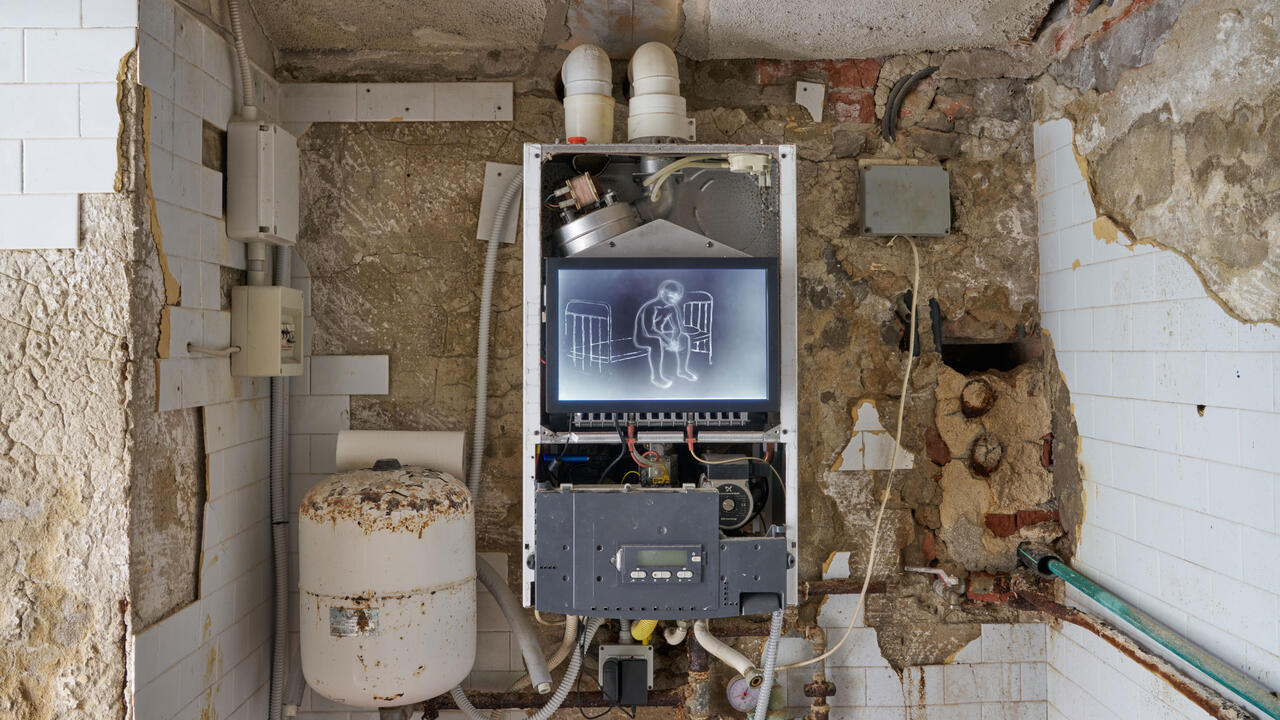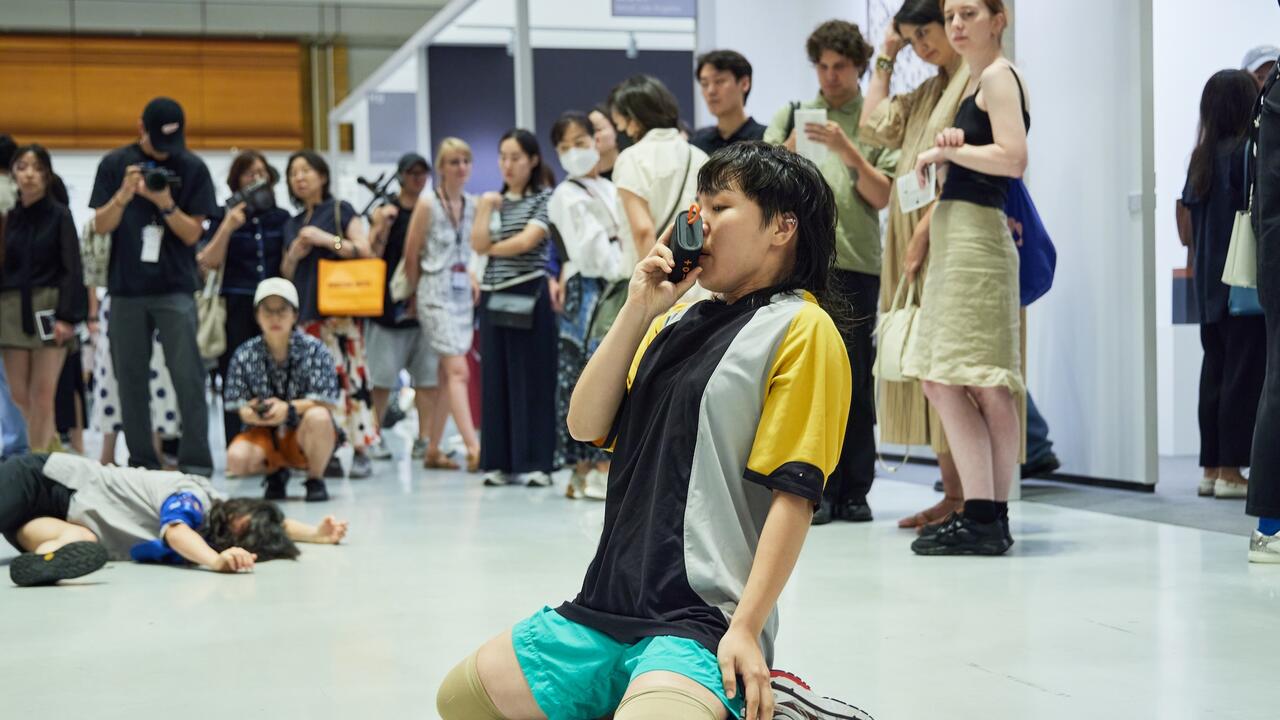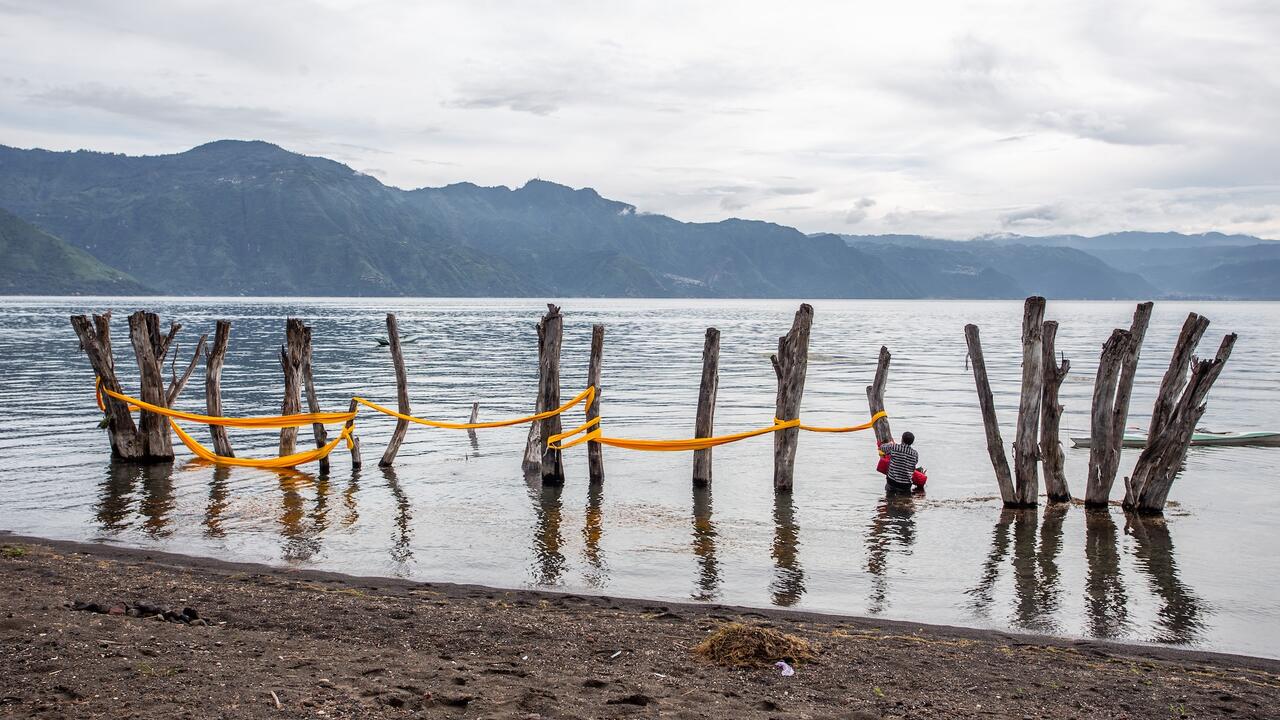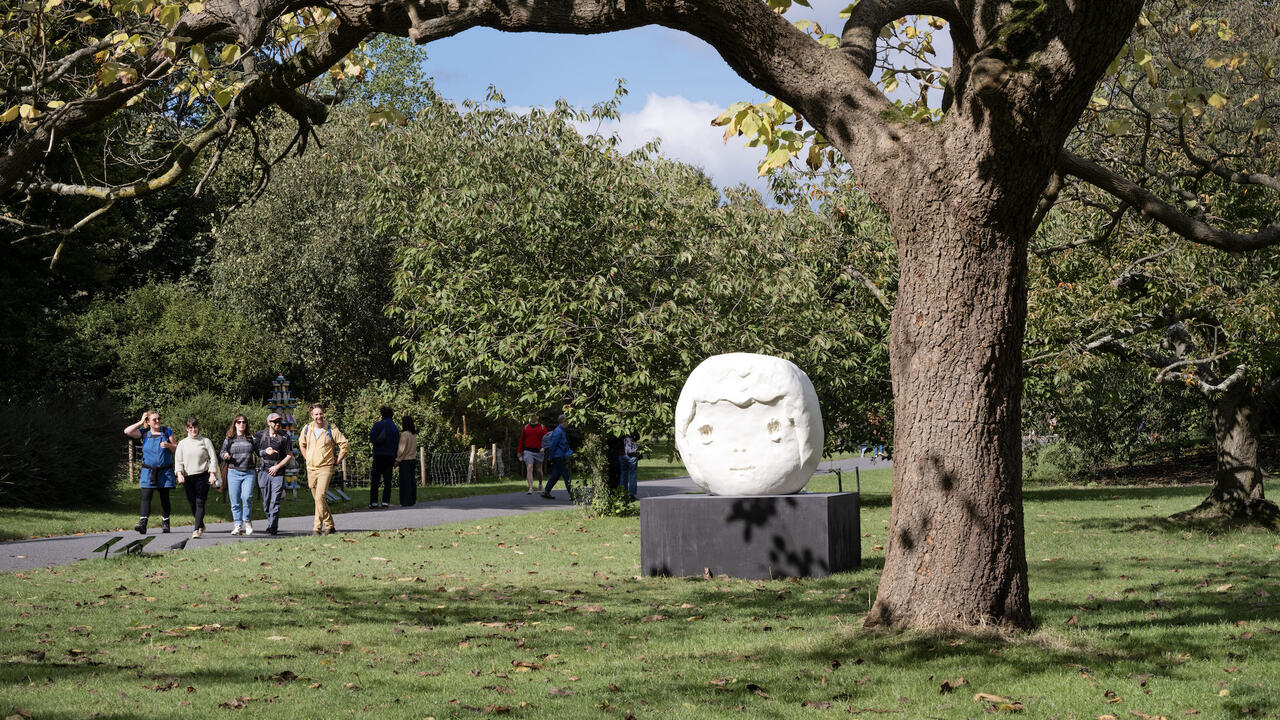Self-Taught Visionaries at Frieze Masters 2025
From Mary Beale to Madge Gill, discover eight artists who pioneered new approaches to art-making
From Mary Beale to Madge Gill, discover eight artists who pioneered new approaches to art-making

At Frieze Masters 2025, our understanding of historical art is challenged and expanded by self-taught figures, whose works and lifestyles remain radical. From the 17th to 20th century, London to Copacabana, men and women without artistic training turned to painting, drawing and photography in the face of financial, psychological and political turmoil. Coinciding with Grayson Perry’s celebration of Madge Gill at London’s Wallace Collection, here are just a few self-taught pioneers to discover at the fair.
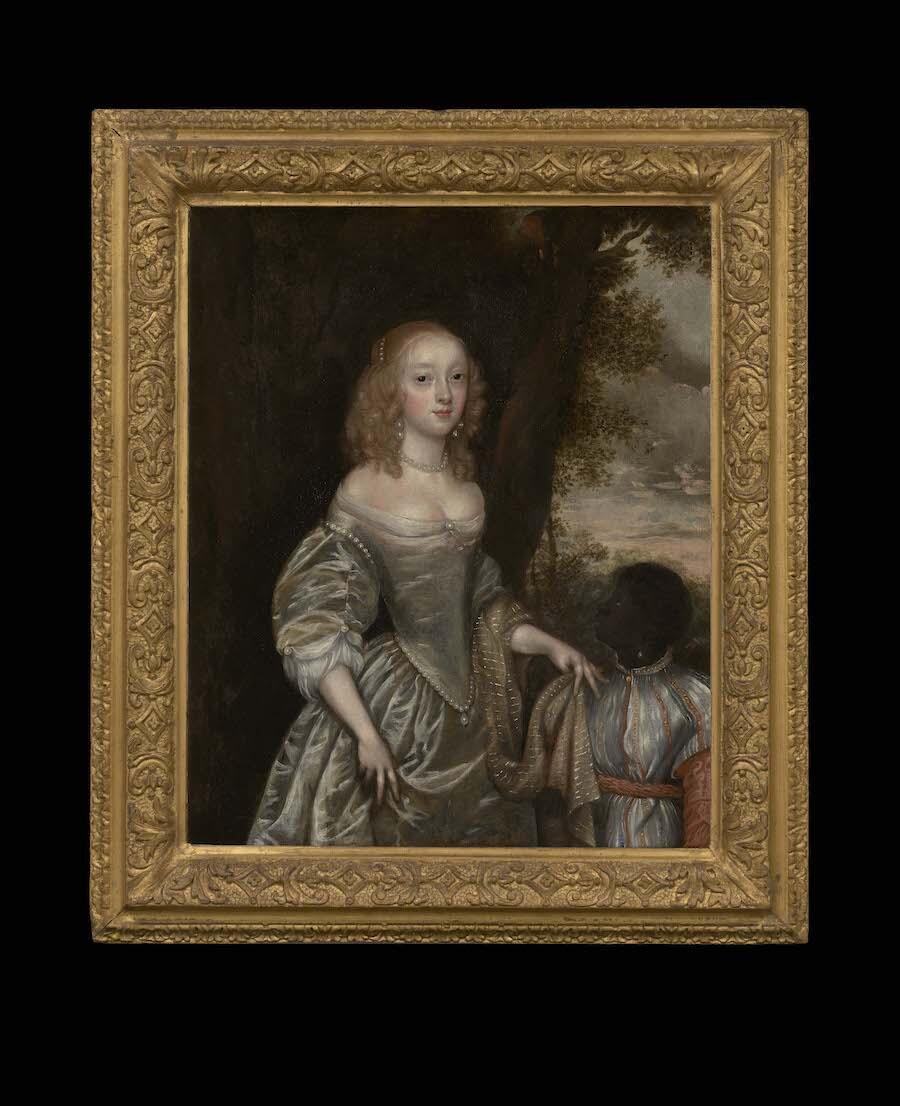
Joan Carlile, Mary Beale and Sarah Biffin presented by Philip Mould & Company
Philip Mould’s Frieze Masters presentation spotlights three self-taught women artists. Joan Carlile (c.1606–79) – thought to have been the first professional female artist in England – developed a distinctive style of small, full-length compositions, predominantly featuring female sitters. Portrait of a Lady (1650s), a characteristically silver-suffused portrait, is a new discovery in Carlile’s small oeuvre.
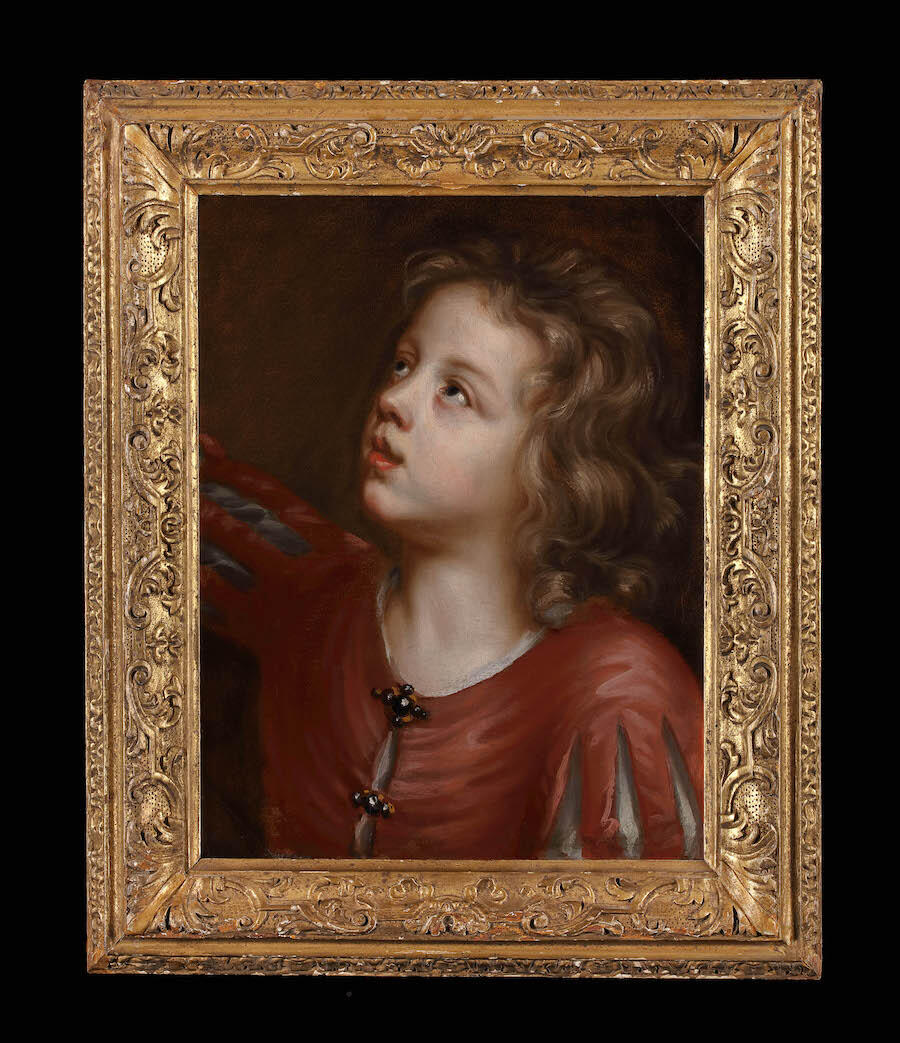
Mary Beale (1633–99) lived just streets away from Carlile and painted Stuart London’s clergy and intelligentsia. Beale began paid commissions in earnest in 1664, when her husband, Charles Beale, lost his job at the Patents Office. Bartholomew Beale (1660s), the artist’s sensitive portrait of her young son, is one of several portraits painted for the purpose of ‘study and improvement’ in her ‘paynting room’ at their home in Hind Court, off Fleet Street.
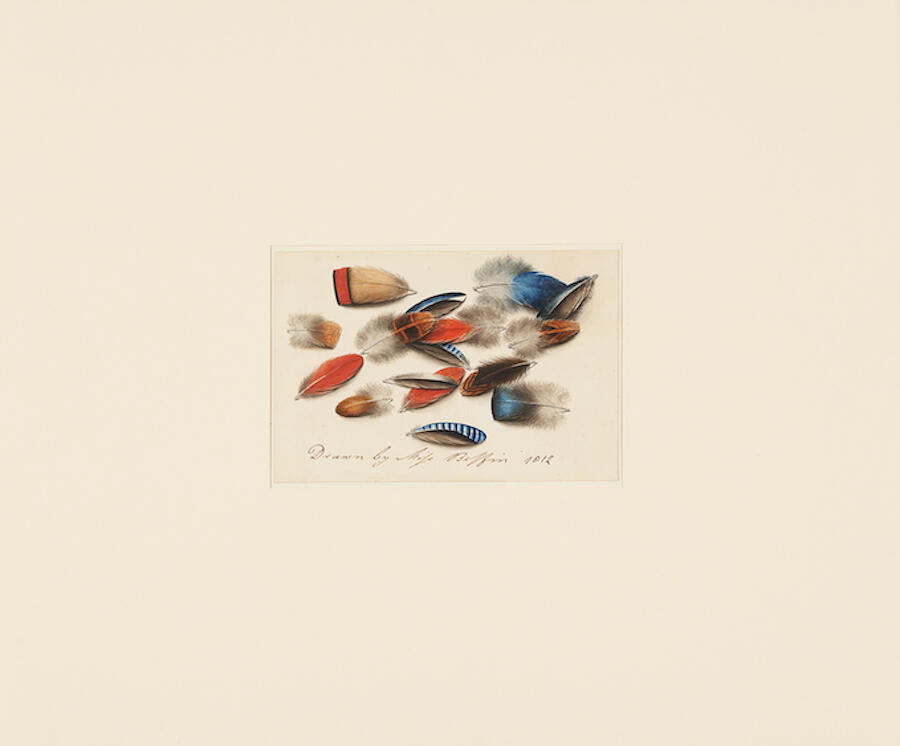
Sarah Biffin (1784–1850), born into a Somerset farming family, did not just teach herself to paint, but trained herself to use a pencil and paintbrush with her mouth and shoulder. Biffin was born without arms or legs and, aged 20, was offered a job as part of a travelling act. She painted, drew, sewed and wrote in front of crowds, her itinerant lifestyle taking her across Britain.
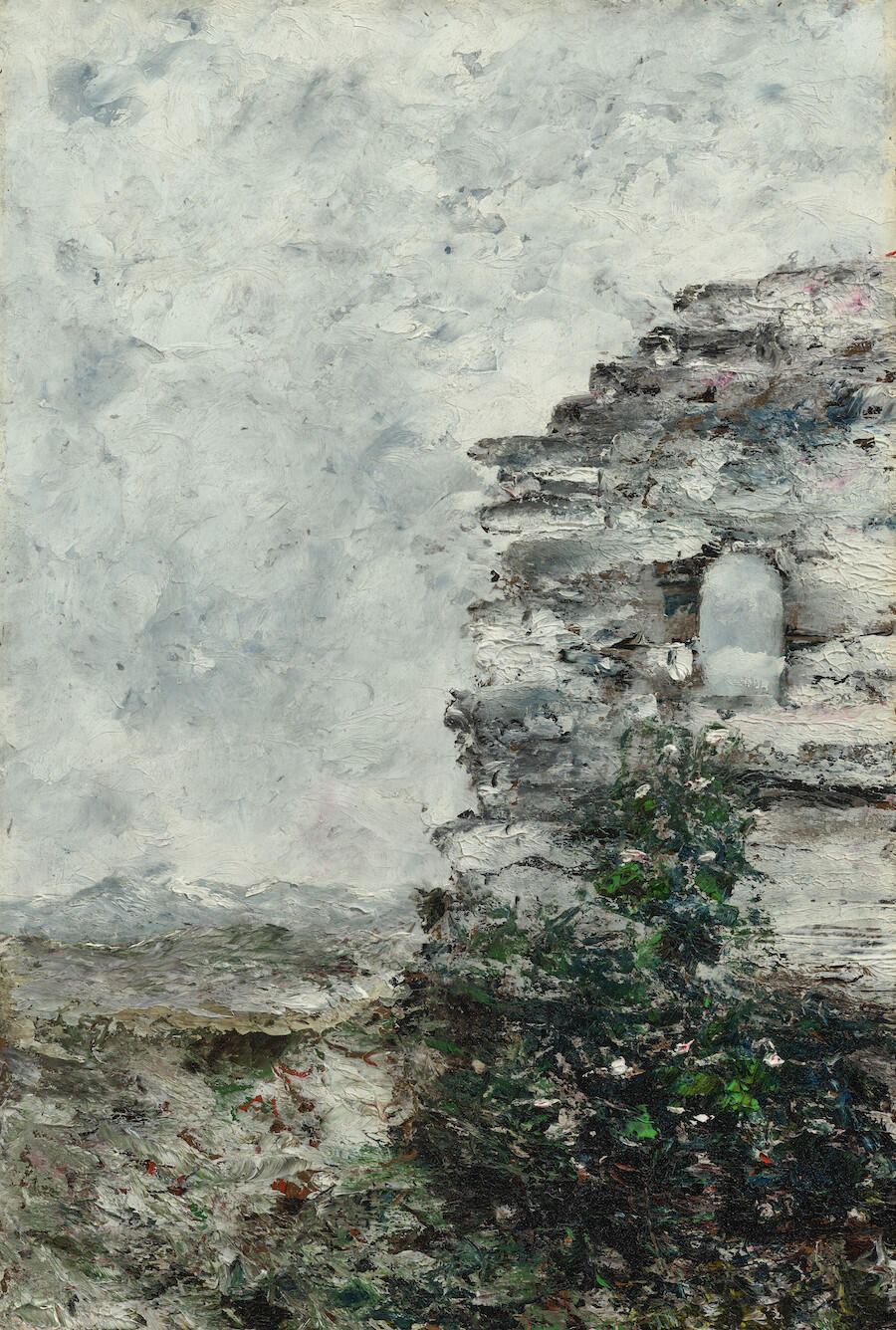
August Strindberg presented by Åmells Konsthandel
Giant of Swedish literature, August Strindberg (1849–1912) turned to painting during periods of crisis in his writing and personal life. Ruin (1894) emerges from one the most tumultuous years of the artist’s life. The same year Strindberg painted Ruin, he reflected on his self-taught artistic process: ‘At first, one notices nothing but a chaos of colours; then it begins to resemble something. In a stroke, a point fixes itself like the nucleus of a cell; it grows, the colours group around it, piling up.’
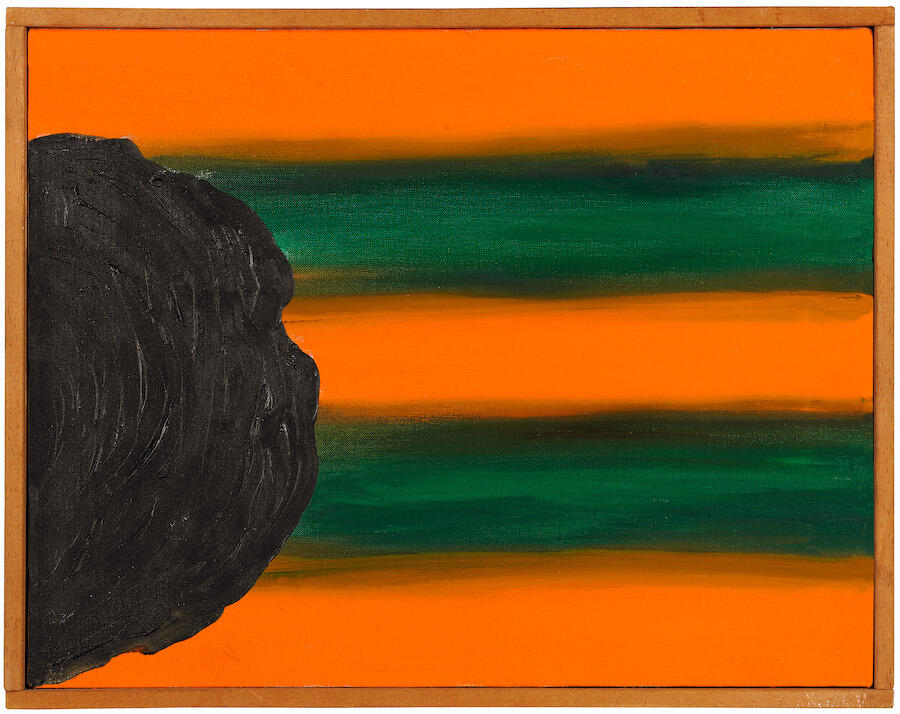
Forrest Bess presented by Franklin Parrasch Gallery
Texas-born Forrest Bess (1911–77) learnt to paint by copying images from books and magazines, imitating the styles of Vincent van Gogh and Albert Pinkham Ryder. During World War II, Bess enlisted in the army to design camouflage. When he began to suffer from psychotic episodes, he was treated by army psychiatrist Jack Weinberg, who encouraged him to paint his hallucinations. After the war, Bess moved to an island off the coast of Bay City, Texas, to work as a bait fisherman. His hallucinations persisted: ‘the visions continue which means that there will be paintings,’ wrote Bess to art historian Meyer Schapiro in 1951. Bess painted at night, translating the visions he experienced on the cusp of sleep. ‘I sense,’ wrote Bess, ‘that I have very little to do with what is put down on the canvas.’ Weinberg had a transformational impact on both Bess’s painting style and his career, becoming his first and most significant patron.
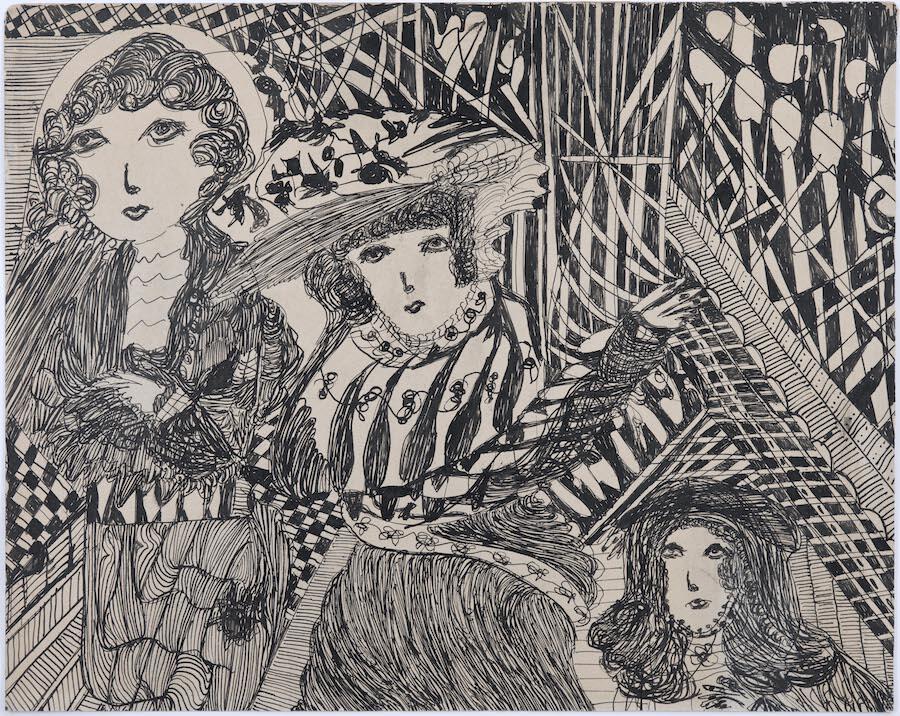
Madge Gill presented by The Gallery of Everything
British artist Madge Gill (1882–1961) was similarly propelled to make art by a visionary force. Myrninerest, Gill’s spirit guide, populated her pages with faces, swirling patterns and cryptic dialogue. Born in London’s East End, Gill was committed to Dr Barnardo’s orphanage aged nine, before being sent to Canada under a child-labour scheme. Gill encountered severe mental health difficulties throughout her twenties and thirties and in 1922, confided a packet of drawings to a doctor at a women’s health clinic in Hove. This was just a small glimpse into the vast wealth of works Gill stashed in her East Ham home. It was not until Gill was 50 that her work was included in an annual exhibition of amateur artists at Whitechapel Gallery. At Frieze Masters, The Gallery of Everything’s solo presentation of Gill in Spotlight – curated by Vivienne Roberts and spanning Gill’s varied works on card, calico and postcards – coincides with ‘Delusions of Grandeur’ at the Wallace Collection, which sets Grayson Perry’s new works in dialogue with Gill’s.
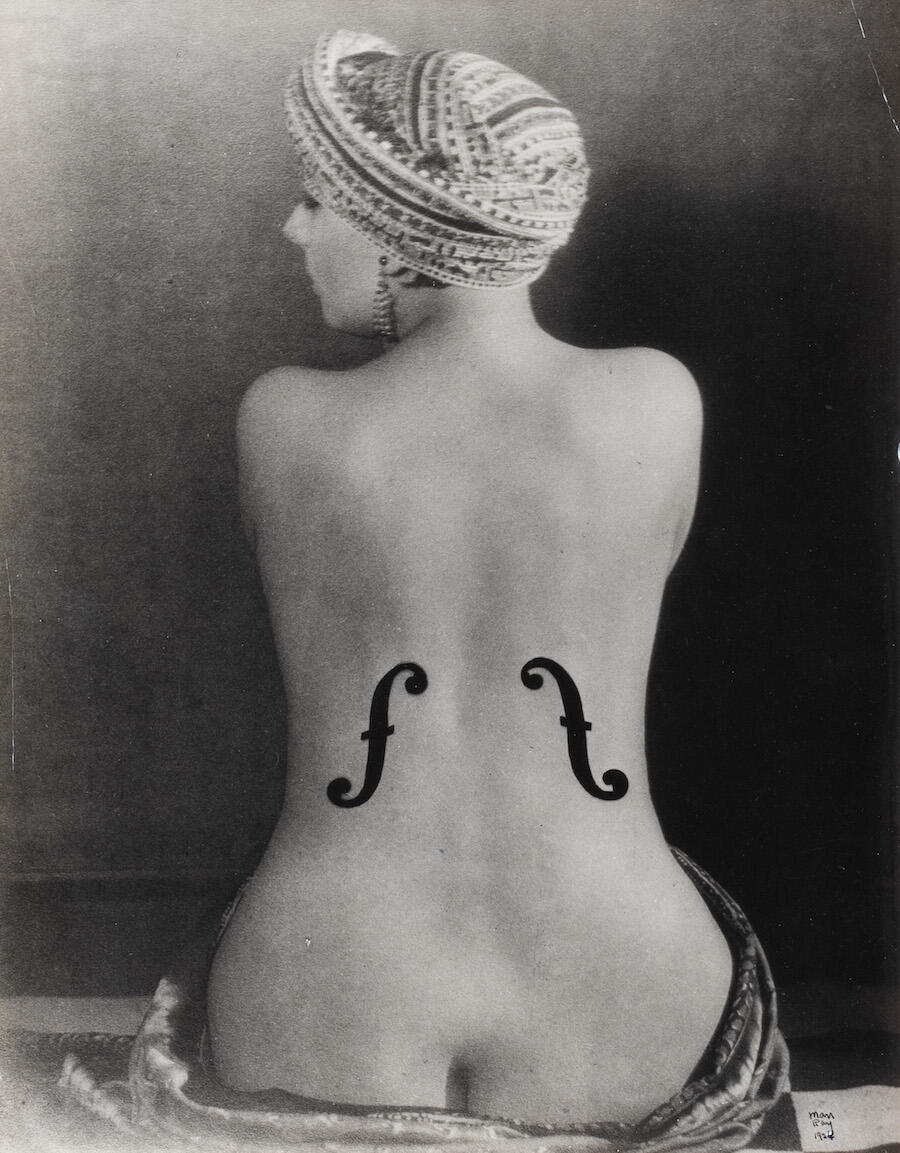
Man Ray presented by Larkin Erdmann Gallery
‘I have finally freed myself from the sticky medium of paint, and am working directly with light itself,’ declared Man Ray (1890–1976) in 1922 when he first began his experimental rayographs. Before photography became Ray’s primary medium, he taught himself to use a camera to create reproductions of his painted and mixed media works. Violon d’Ingres (1924), presented at Frieze Masters by Larkin Erdmann, is one of the 20th century’s most iconic photographs. Inspired by Jean-Auguste-Dominique Ingres’s 19th-century nude studies, Ray worked under his enlarger to layer cut-outs of a violin’s f-holes over a photograph of his lover and muse, Kiki de Montparnasse.
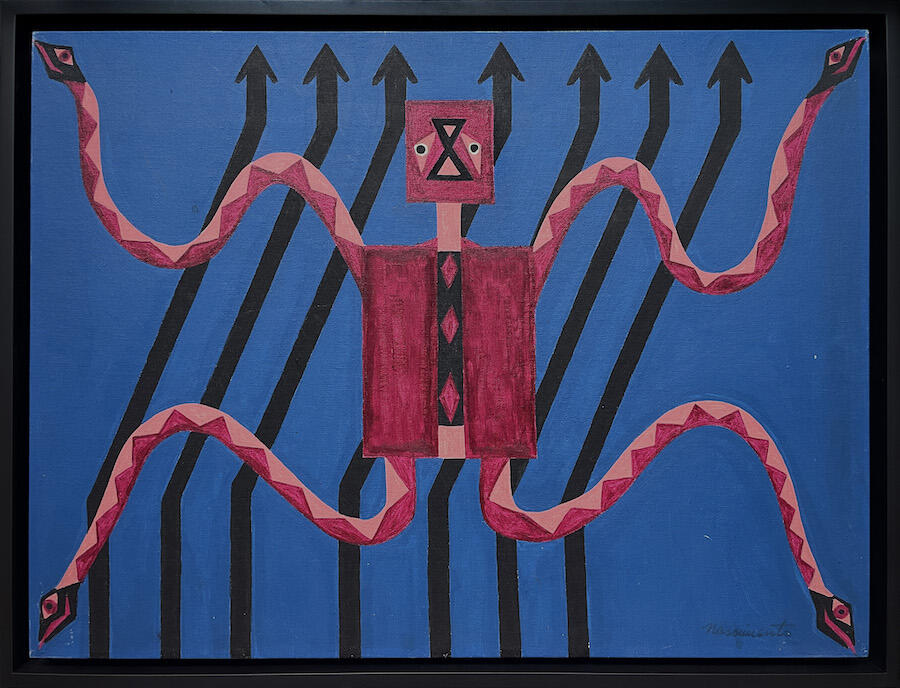
Abdias do Nascimento presented by Galeria MaPa
In 1968, in his Copacabana apartment, Abdias do Nascimento (1914–2011) began his first series of paintings. The same year, Nascimento fled Brazil’s repressive dictatorship and went into exile in New York. Nascimento dedicated his life to combating racial prejudice and building Black arts communities. He founded the Black Experimental Theatre in Rio de Janeiro, helped form the Brazilian political party Democratic Labour Party and co-founded the Afro-Brazilian Democratic Committee to advocate for political prisoners. These core values extended to Nascimento’s work as a self-taught artist. ‘My paintings,’ wrote Nascimento, ‘are not only concerned with aesthetic forms, the distribution of volumes in space or the relative tones of colours. What is important to me are Afro-Brazilian…myths, religious history, legends.’
Further Information
Frieze London and Frieze Masters, The Regent’s Park, 15 – 19 October 2025. Tickets are on sale – don’t miss out, buy yours now. Alternatively, become a member to enjoy premier access, exclusive guided tours and more.
For all the latest news from Frieze, sign up to the newsletter at frieze.com, and follow @friezeofficial on Instagram and Frieze Official on Facebook.
Main Image: Abdias Nascimento, Oricha’s Mother (Mother Nature), 1971. Acrylic on canvas, 92 × 122 cm. Courtesy: Galeria MaPa





